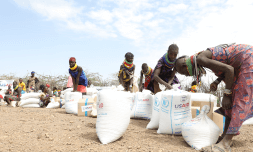Many are speculating the mass wash-up is a result of the ‘treated’ radioactive water released into the ocean in recent months. Japan’s Fisheries Agency is denying the link.
Off the fishing port of Hakodate in Japan, 1,200 tons of dead sardines and mackerel washed ashore earlier this month.
Local fishermen have rushed to collect the mass of fish which stretched for more than a kilometre over fears that they would cause the oxygen content of the water to drop as they decomposed. The consequences of this would damage the surrounding marine environment.
For now, the cause of the mass fish death is unknown. Sometimes this happens when ocean temperatures drop rapidly, and fish go into shock or when migratory species are chased by larger predators to the point of exhaustion.
However, some have speculated that the cause is related to the treated nuclear waste that was released into Japan’s oceans. It is a hypothesis that authorities in Japan have quickly tried to stifle.





















